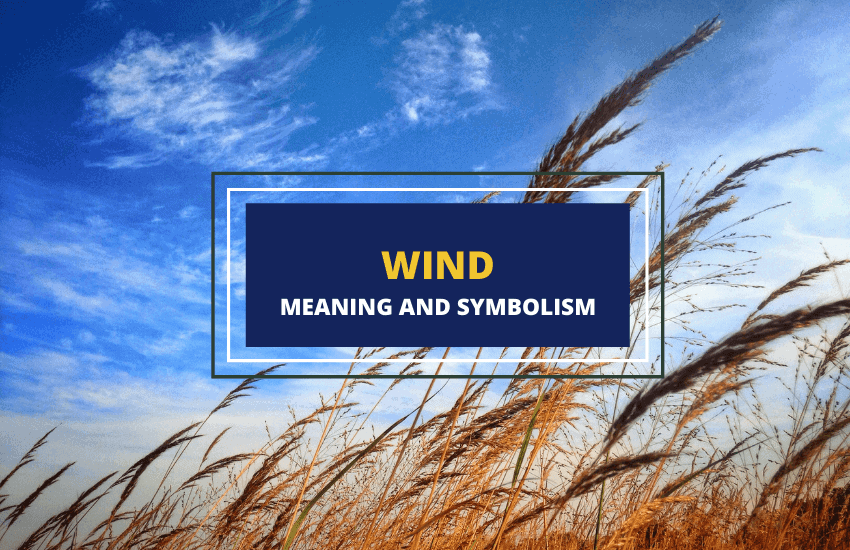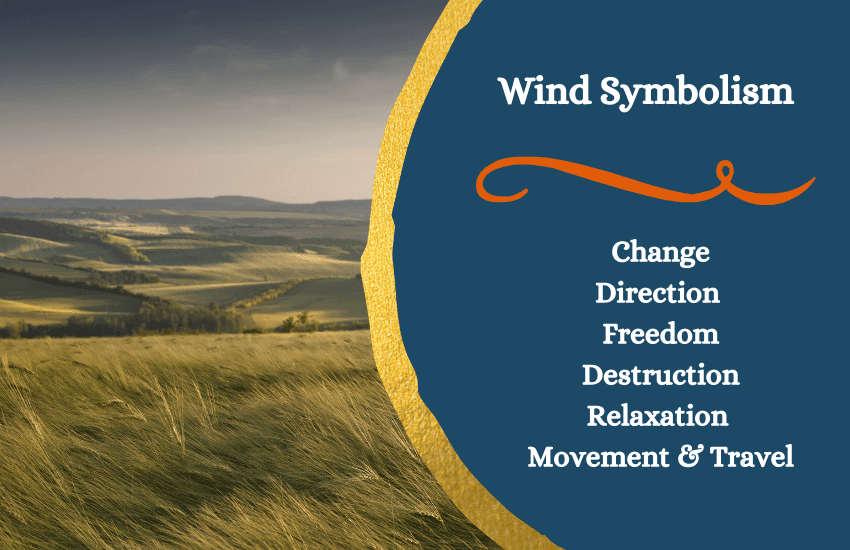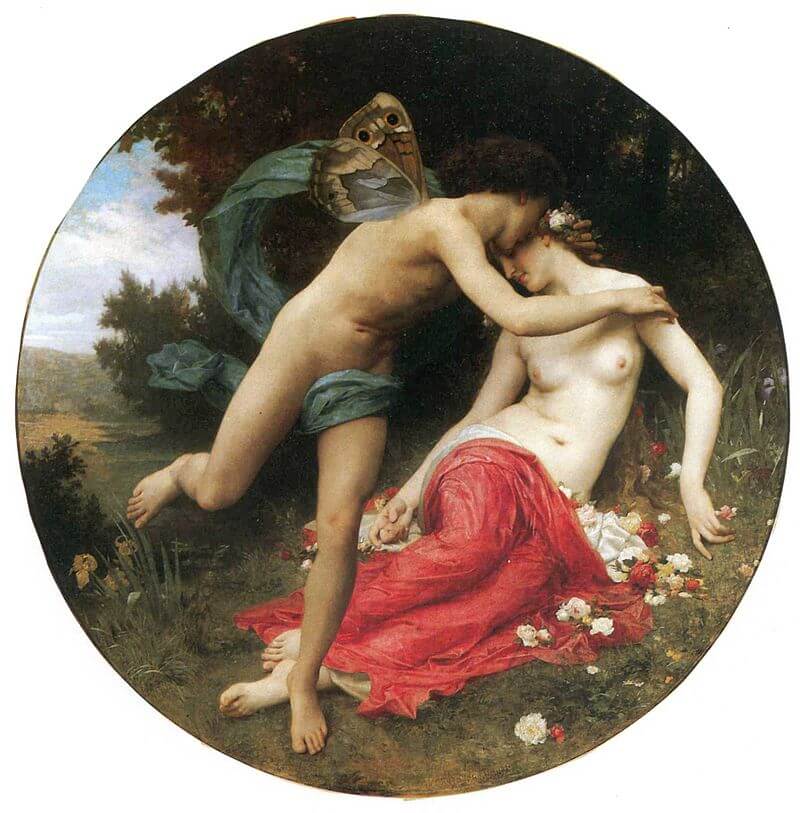
Table of Contents
While the wind is invisible to the naked eye, it can effortlessly make its presence known wherever and whenever. Over time, humans have learned how to harness the wind to generate electricity and power turbines, which is once again a hallmark of man’s perceived triumph over nature.
Whether it comes in the form of a gentle breeze or a destructive hurricane, the wind is a force of nature that can be used to symbolize many things. Read on to learn more about how the wind has been used to get different messages across.
Symbolism of the Wind

- Change – The very phrase wind of change refers to the symbolism of wind as a force that has the power to change things. This meaning comes from the weather, as winds can signify an impending change in the weather. For example, for the British Isles, northerly winds tend to bring cold air from the polar regions. Oftentimes, when people feel the change in the wind, they know that the weather too is going to change. This has made the wind a symbol of impending change.
- Direction and Travel – As winds travel from certain directions, they’re associated with direction, movement, and travel. They move from one place to the other, never staying still. We only hear the wind if its on the move, indicating that its always traveling. In addition to this, when outdoors or in the wild, people often check the direction of the wind to predict the weather so that they can plan their best route or activities.
- Freedom – The wind is a symbol of freedom in that it can move when and where it pleases, without restriction. To be as free as the wind is a common phrase, used as the title of songs as well as the subject of paintings.
- Destruction – When winds are intense and powerful, they can cause terrible destruction and devastation. They often bring with them other natural phenomena, such as hail, snow, or rain. Taken this way, the wind can symbolize the destructive forces of nature.
- Message from the Divine – In some cultures, the wind is seen as a message or assistance sent from the divine. In Japan, typhoons are described as divine winds, due to a legend that the deity Raijin sent powerful winds to destroy Japan’s enemies at a critical point. The winds are called kamikaze, meaning divine winds.
- Relaxation – When it blows softly and gently, the wind can be a symbol of relaxation and rejuvenation. Like the sound of soft rainfall or snowfall, the sound of the wind blowing through trees is beautiful, natural music that makes people feel relaxed.
Wind in Religion and Mythology
The use of the wind as a symbol goes as far back as the time of the Old Testament. In the Bible, the wind was often used to paint a picture of impermanence or futility. For instance, some verses in the book of Psalms describe human life as a whisper in the wind. Another example is in Ecclesiastes, where meaningless actions are usually compared to worthless efforts of trying to catch the wind.
In the book of Ephesians, the wind was again given a negative connotation, as it was used as a metaphor for uncertainty and doubtfulness. Paul the Apostle wrote about people with strong faith who eventually develop spiritual maturity and compared them to those who are easily swayed by teachings that seem to change like the wind. James the Great, one of the first disciples to join Jesus, also speaks about people who doubt God being like waves that are easily blown away by the wind.
However, the wind is also used as a positive symbol in some verses in the Bible. It has been connected to the breath of God, as stated in Ezekiel 37:9 where the four winds from the east, west, south, and north were used to portray the breadth of God’s power. However, one of the most popular references to the wind involves its comparison to the Holy Spirit. Saint John wrote about the wind as a presence that can be felt and heard, but not seen, much like the Holy Spirit.

In Greek mythology, the wind is represented by the Anemoi, which were often portrayed as winged men or gusts of wind. There were four chief Anemoi – Boreas, who represented the north wind, Zephyrus the west wind, Eurus the southeast wind, and Notus the south wind. Unlike Boreas, Zephyrus, and Notus, Eurus is not associated with any of the Greek seasons, so he is not mentioned in the Theogony, which describes the genealogies of Greek gods.
Other wind deities are also mentioned in some ancient writings like the Tower of the Winds in Athens, Greece. These deities included Kaikias, god of the northeast wind, who is depicted in as a bearded man holding a shield. Another Greek deity known as Apeliotes, god of the southeast wind, was known to bring wind that could cause the showers that farmers welcome.
Wind in Film and Literature
The wind has always been a popular literary device because of how effective it is in terms of setting the mood and tone of a story. In Ted Hughes’ poem entitled Wind, the strong winds shaking the house symbolize the raw and uncontrollable power of nature.
…Winds stampeding the fields under the window…
Once I looked up –
Through the brunt wind that dented the balls of my eyes….
The wind flung a magpie away and a black-
Back gull bent like an iron bar slowly….
We watch the fire blazing,
And feel the roots of the house move, but sit on,
Seeing the window tremble to come in,
Hearing the stones cry out under the horizons.
Some also interpret it as something chaotic in the speaker’s life. Moreover, it speaks of how people are sometimes left with no choice but to wait when facing the overpowering nature of the wind.
The wind is also used in figurative language, usually to describe the way someone does something. For example, when you say that someone ran like the wind, you don’t mean it in a literal sense. It is a figure of speech where you compare someone’s speed to the wind because of its fast and sweeping nature. Some songs, like Led Zeppelin’s Rain Song, also use the wind as a simile, comparing human emotions to how the winds seemingly rise and fall.
Another memorable use of the wind is in M. Night Shyamalan’s movie entitled The Happening. In this psychological thriller, people mysteriously start committing mass suicide. The wind is used to add an ominous feeling to the movie. While the characters initially think that the mass suicides are caused by an airborne toxin, they learn that it is the trees that are targeting people. Throughout the movie, strong and violent winds are used to represent Mother Nature’s wrath, teaching human beings a lesson to remember.
Wind in Dreams
Just like in film and literature, the wind may also mean different things in dreams. One popular interpretation is that changes are coming to your life. The way you adjust to such changes depends on how you react to the wind in your dream. If it was so strong that it picks you up, there’s a chance that the change will be something unexpected. However, if it gently nudged you in another direction, it might mean that you are aware of the change, and you might already be prepared for it.
Some say that when you dream of the wind, your subconscious mind might be telling you to work harder towards achieving your goals quickly. It may also be a reflection of the stress in your life, especially if you are overwhelmed with everything going on. In addition, if the gust of wind in your dream takes you in a direction that you don’t want to go, it could be an indication that you are being forced into something that is against your will.
On the contrary, a gentle breeze might indicate something positive like new beginnings and ideas. Unlike strong winds, these changes are manageable because you can do them at your own pace, and you are not being forced to do them.
Wrapping Up
These are only some of the most popular interpretations of the wind. As a symbol of change, movement, direction, travel, destruction, and relaxation, the wind has both positive and negative interpretations.





